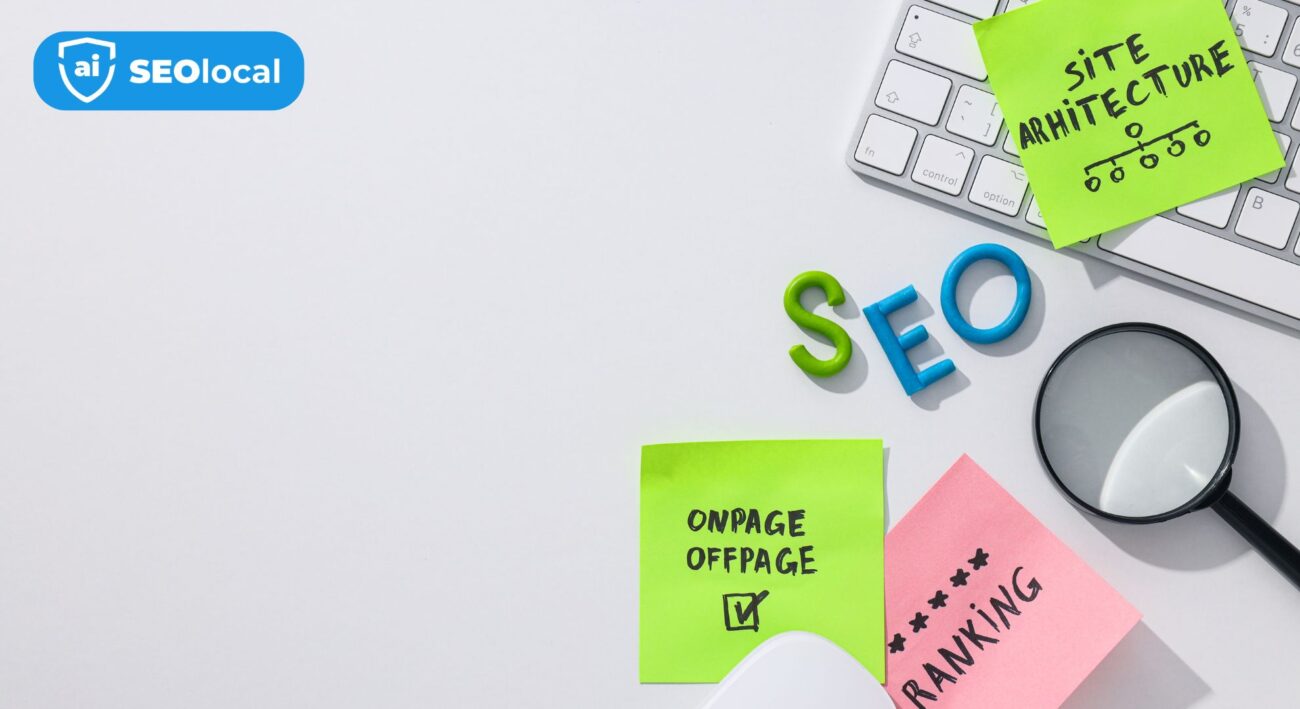
Blog
AI Search Optimization: How to Stay Ahead in the Age of Smart Search

Did you know 98% of education-related queries now trigger AI-generated answer boxes? These interactive panels dominate search results, reshaping how users find information. Google’s latest systems analyze intent and context to deliver answers instantly—often pulling data from multiple sources without requiring clicks.
This shift means traditional SEO tactics alone won’t cut it. Algorithms now prioritize natural language patterns and user-focused content. Your strategies must adapt to how machines interpret relevance, not just keyword density.
Machine learning models evaluate content depth and accuracy. They cross-reference data points to verify expertise. Your pages need clear structure and authoritative signals to meet these standards. Focus on solving problems, not just ranking for terms.
Key Takeaways
- AI-driven answer boxes appear in 98% of education-related searches
- Modern algorithms prioritize context over isolated keywords
- Content must demonstrate expertise and address user intent directly
- Technical SEO now includes schema markup for AI comprehension
- Hybrid strategies blend human creativity with machine preferences

Understanding AI Search Optimization
Businesses face a new reality where algorithms interpret content like human readers. Instead of matching exact phrases, systems now analyze meaning and relationships between ideas. This shift requires fresh approaches to technical and creative strategies.
What This Means for Your Business
Your digital presence must answer questions before users finish typing them. Modern tools evaluate content depth through semantic patterns rather than simple keyword counts. Three critical changes demand attention:
| Factor | Traditional Approach | Modern Method |
|---|---|---|
| Keyword Focus | Exact matches | Concept clusters |
| Content Analysis | Word frequency | Contextual relevance |
| Adaptation Speed | Manual updates | Real-time adjustments |
| Data Processing | Limited metrics | Cross-platform insights |
| Task Automation | Basic scripts | Predictive modeling |
The SEO Transformation Process
Manual processes can’t keep pace with algorithm updates occurring every 2-3 hours. New systems process thousands of signals across social platforms, forums, and industry databases. You need solutions that identify emerging patterns before competitors notice them.
Focus shifts from ranking for specific terms to establishing topical authority. Tools using natural language processing help create content that addresses multiple user intents simultaneously. This approach builds sustainable visibility across evolving search environments.
The Evolution of Search Engine Optimization
Two decades ago, improving website visibility meant repeating phrases hundreds of times and manually submitting sites to directories. Early tactics focused on tricking systems rather than helping users. Today, search engines prioritize relevance and usefulness, requiring smarter methods to stay visible.

From Manual Methods to AI-Driven Strategies
The shift began when basic keyword stuffing lost effectiveness. Teams once spent weeks optimizing individual pages and building links one by one. Modern tools now scan millions of data points—like user clicks and competitor gaps—in minutes.
Three key advancements changed the game:
- Automated systems handling technical audits and content adjustments
- Predictive models identifying rising topics before they trend
- Natural language analysis mapping how ideas connect in conversations
These advancements let you focus on strategy rather than repetitive tasks. Instead of guessing which phrases to target, tools reveal hidden opportunities through semantic patterns. They also track algorithm updates automatically, adjusting your approach in real time.
Successful strategies now blend machine efficiency with human insight. While tools handle data analysis, your expertise ensures content aligns with audience needs. This balance creates sustainable growth in competitive markets.
Integrating AI into Your SEO Strategy
Modern SEO demands more than manual analysis and guesswork. Advanced technologies now handle tasks that once took hours, from spotting content gaps to predicting trending phrases. The key lies in strategic implementation—using the right tools for specific needs without overhauling your entire workflow.
Leveraging Machine Learning and Natural Language Processing
Start by targeting high-impact areas where automation delivers immediate results. Machine learning excels at processing vast amounts of data to uncover hidden opportunities. For example, it can analyze competitor strategies across regions or identify seasonal traffic patterns you might miss.
| Task | Traditional Approach | Tech-Driven Solution |
|---|---|---|
| Keyword Research | Manual volume checks | Predictive trend forecasting |
| Content Audits | Sample page reviews | Full-site quality scoring |
| Intent Matching | Basic keyword mapping | Conversational query analysis |
Natural language processing helps craft content that answers real questions. It deciphers how people phrase requests when using voice assistants or detailed queries. This insight lets you create material that aligns with actual user needs.
Overcoming Common Implementation Challenges
Many teams struggle with tool overload. Focus on platforms that integrate with your existing systems rather than chasing every new feature. Train your members to interpret data outputs, not just collect them.
Set clear benchmarks to track progress. Compare automated processes against manual efforts monthly. Adjust your mix based on what delivers measurable improvements in rankings and engagement.
Optimizing for AI search optimization on Your Website
Your website’s technical setup now directly impacts visibility in answer-rich results. Systems prioritize sites that deliver seamless experiences while clearly signaling content relationships. Let’s explore critical adjustments to stay competitive.

Core Technical Upgrades for Better Visibility
Start by organizing your pages with proper heading tags (H1-H6). This creates clear content hierarchies that help systems map your expertise. Pair this with descriptive anchor text in internal links to show how topics connect across your site.
Speed matters more than ever. Compress images and minimize code bloat to hit loading targets under 2 seconds. Mobile responsiveness and accessibility features like alt text also influence rankings across devices.
| Traditional Factor | Modern Requirement |
|---|---|
| Basic mobile compatibility | Core Web Vitals compliance |
| Simple sitemaps | Structured data markup |
| Manual audits | Automated monitoring tools |
Implement schema markup to highlight key details about your services or products. This structured data acts as a translation layer between your content and advanced algorithms.
Regularly check crawlability through clean URLs and updated robots.txt files. Use XML sitemaps to guide indexing processes, especially for new or updated pages. Combine these efforts with quarterly audits to catch issues like broken links early.
Content Strategies to Enhance Organic Traffic
Creating material that stands out requires more than polished writing. Systems now prioritize content demonstrating real-world expertise and depth. A recent study found pages with expert contributions receive 3x more visibility in answer-focused results.
Developing Expert-Driven and Authoritative Content
Start by collaborating with professionals in your field. Feature interviews with certified specialists or publish peer-reviewed case studies. This approach builds trust with both readers and algorithms evaluating your credibility.
Structure content around specific questions your audience asks. Use tools like AnswerThePublic to identify gaps in existing explanations. For example:
| Traditional Content | Expert-Driven Approach |
|---|---|
| General tips | Step-by-step guides verified by practitioners |
| Basic definitions | Deep dives with original research data |
| Single perspectives | Roundtable discussions with industry leaders |
Long-form articles (2,000+ words) perform best when organized into clear sections. Use subheadings that mirror natural language queries. Include citations from .gov or .edu domains to reinforce claims.
Monitor how users engage with your material. Update sections receiving high bounce rates with expert commentary. This continuous improvement cycle helps maintain quality signals that boost organic traffic over time.
Build topic clusters around core areas of expertise. Link related articles using descriptive anchor text. This strategy establishes your site as the go-to resource for specific subjects.

Harnessing Data and Analytics for Better Insights
Data-driven decisions now separate industry leaders from competitors. Advanced systems process millions of signals daily—from click patterns to regional search variations—to uncover hidden opportunities. Your strategy needs these insights to stay ahead.
Smart Analysis for Strategic Growth
Modern tools analyze behavior across devices and platforms. They spot trends human teams might overlook, like sudden interest in niche topics or shifting regional demands. This approach transforms raw numbers into actionable plans.
| Traditional Analytics | Modern Approach |
|---|---|
| Monthly reports | Real-time dashboards |
| Basic keyword lists | Semantic topic clusters |
| Manual competitor checks | Automated gap detection |
| Single metric focus | Cross-channel correlations |
Combine search console data with social media trends and forum discussions. This multi-source analysis reveals what your audience truly needs. Track engagement metrics like time-on-page alongside technical factors like load speed.
Set clear goals using measurable indicators. Compare new methods against past results weekly. Adjust your content and technical elements based on what drives traffic and conversions.
Predictive models help anticipate seasonal shifts or algorithm changes. They analyze historical patterns to forecast upcoming trends. Use these insights to prepare content before demand peaks.
Balance automated reports with direct user feedback. Surveys and comments add context to your metrics. This mix ensures your strategy aligns with both system requirements and human needs.
Local SEO and AI: Boosting Your Local Visibility
Over 46% of all Google searches seek local information, making precise optimization critical. Modern systems prioritize businesses that deliver consistent, verified details across digital touchpoints. Your local presence now directly impacts visibility in maps, voice searches, and integrated answer panels.
Building Trust Through Digital Consistency
Start by auditing your business name, address, and phone number (NAP) across directories. Even minor discrepancies confuse systems scanning for reliability signals. Prioritize these three areas:
- Google Business Profile completeness (services, attributes, Q&A)
- Review platform accuracy (Yelp, industry-specific directories)
- Social media profile alignment (hours, contact info)
High-quality photos of your location and team help systems verify authenticity. Upload images showing your storefront, products, and staff in action. Geotagged photos reinforce your physical presence.
| Traditional Local SEO | AI-Optimized Approach |
|---|---|
| Basic directory listings | Multilingual platform updates |
| Static business hours | Real-time holiday adjustments |
| Generic city keywords | Neighborhood-specific phrases |
Encourage customers to leave detailed reviews mentioning your services and location. Systems analyze sentiment and specificity to assess relevance. Respond promptly to feedback—positive or negative—to show engagement.
Create content around local landmarks, events, or challenges. A bakery might share recipes using regional ingredients. A mechanic could explain seasonal car care tips. This strategy connects your expertise to community needs.
Monitor mentions on platforms like Nextdoor or local news sites. Address inaccuracies quickly to maintain data integrity. Consistent branding and timely updates build the credibility needed to dominate local results.
Balancing AI Capabilities with Human Oversight
Automated tools process mountains of data faster than any team could manually. Yet raw numbers alone can’t capture cultural shifts or emerging needs. Your greatest advantage lies in merging system-generated insights with hands-on experience.
Analyzing Aggregated Trends and Patterns
Advanced platforms identify traffic spikes and content gaps across regions. They track phrase variations people use when seeking solutions. But trends need context—seasonal shifts might signal temporary interest or lasting behavioral changes.
Review correlations between search patterns and real-world events. A surge in “remote learning tools” could align with school policy updates. Cross-check these findings with customer feedback to separate fleeting fads from meaningful movements.
Combining System Insights With Personal Expertise
Machines excel at spotting patterns, but humans interpret their significance. Use automated reports as starting points, not final answers. A tool might flag declining traffic for a service page—your team determines whether to update content or adjust targeting.
Develop workflows where data informs decisions rather than dictating them. Train staff to ask “why” behind every metric. This balance ensures strategies remain adaptable while leveraging technological efficiency.
FAQ
How does machine learning impact traditional methods for improving visibility?
Machine learning algorithms analyze user behavior and intent faster than manual processes. Tools like Google’s BERT now prioritize natural language patterns, requiring content to align with how people phrase real-world questions.
What technical upgrades help websites perform better with modern algorithms?
Focus on page speed, mobile responsiveness, and structured data markup. Tools like SurferSEO or Screaming Frog can identify crawl errors, while schema markup helps engines understand context for richer results.
Why is expert-driven content critical for ranking today?
Platforms like Google’s E-E-A-T guidelines reward content demonstrating firsthand experience. Case studies, peer-reviewed research, or interviews with industry leaders build authority and trust with both users and algorithms.
How can local businesses use smart tools to boost credibility?
Ensure your Google Business Profile is accurate and updated. Tools like Yext sync details across directories, while reviews and localized keywords (e.g., “best coffee shop in Austin”) align with voice search trends.
Should human teams still manage strategies driven by automation?
Yes. While tools like SEMrush forecast trends, human expertise interprets nuances. For example, a sudden traffic drop might require checking server logs or reassessing audience intent—tasks needing critical thinking beyond raw data.
What metrics matter most when refining organic growth tactics?
Track click-through rates, dwell time, and keyword rankings. Tools like Ahrefs or Moz highlight gaps, but prioritize metrics tied to business goals, like conversions from high-intent terms like “buy” or “near me.”

